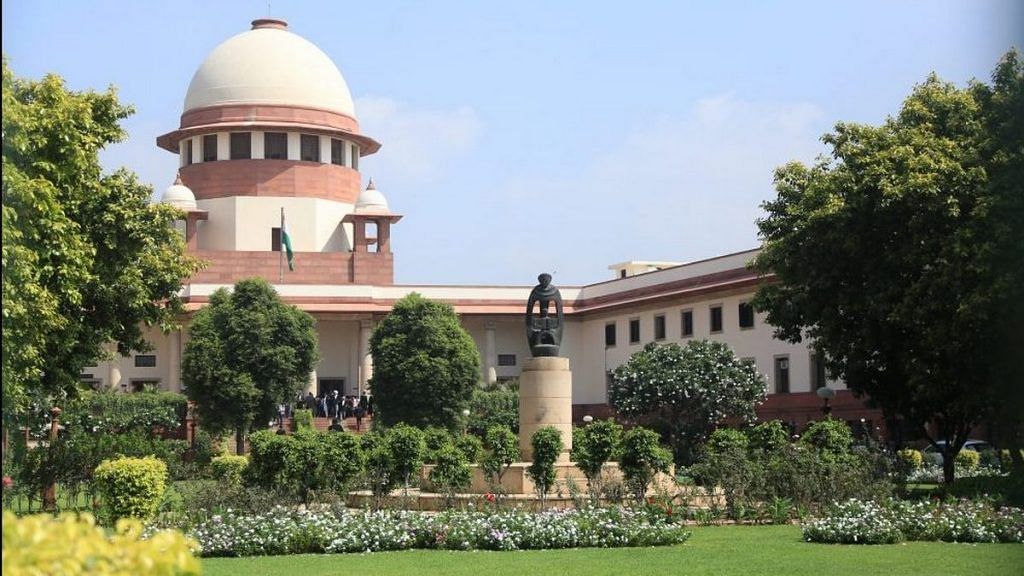New Delhi: Since the Right to Fair Compensation and Transparency in Land Acquisition, Rehabilitation and Resettlement Act (LAAR) came into force in 2013, Section 24(2) of the Act has been mired in controversy.
Section 24(2) states that in case of land acquisition proceedings, if a developer fails to take possession of land acquired under the old laws for five years, or if compensation is not paid to the owner, the land acquisition process would lapse. The process would then have to be re-initiated under LAAR, which would allow the owner to get better compensation.
The controversy began in 2018 when a three-judge bench of the Supreme Court overruled a judgment passed by another three-judge bench of the court in 2014.
While a five-judge Constitution bench was subsequently set up to settle the dispute on the interpretation of Section 24(2), the composition of this bench is also being challenged.
Also read: If SC declares its 2014 land acquisition judgment ‘careless’, other cases will be reopened
Difference of opinion between benches
In 2014, a three-judge bench of the apex court, in the Pune Municipal Corporation v Harakchand Misirimal Solanki case, held that acquisition proceedings initiated under the 1894 Act, which were initiated five years before the 2013 law was enacted, would lapse if the land in question was not taken control of, or if compensation was not paid to displaced farmers.
The judgment, which was delivered by a bench comprising Justices R.M. Lodha, M.B. Lokur and Kurian Joseph, came as a relief for land owners.
However, in 2018, another three-judge bench of Justices Arun Mishra, Adarsh Kumar Goel and Mohan Shantanagoudar declared the judgment in the Pune Municipal Corporate case “per incuriam” in the Indore Development Authority v Shailendra (D) Through LRS & Ors case. The judgment was delivered with a 2:1 majority, with Justice Shantanagoudar dissenting.
A judgment can be declared per incuriam if it does not follow a statutory provision or a binding precedent that may have been relevant. It literally translates to “through lack of care”. In such scenarios, a judgment can be declared to be without any legal force, and is then not treated as a valid precedent.
The fresh judgment held that if a landowner refuses to accept the compensation offered by the developer, they cannot take advantage of their own wrongdoing and have the acquisition proceedings lapse under the old law. This came as a relief for developers.
Reference to larger bench
Days after the 2018 judgment, another three-judge bench comprising Justices M.B. Lokur, Kurian Joseph and Deepak Gupta stayed the operation of the Indore Development Authority judgment. Justices Lokur and Joseph were part of the earlier bench that delivered the Pune Municipal Corporation judgment.
This bench directed the high courts across the country to not decide any case on the basis of the new ruling, and requested apex court judges to defer hearing and not pass any orders in other cases pending before the Supreme Court.
This bench essentially took objection to the 2018 three-judge bench overruling a precedent laid down by a coordinate bench, because in common law, judgments by larger benches or those with equal number of judges are binding on other benches. Hence, a three-judge bench cannot override the judgment of another three-judge bench. It can only record its difference of opinion and request for the case to be considered by a larger bench, to set a binding precedent.
During the hearing, Justice Joseph was quoted as saying: “I don’t want to remain silent on this issue. There are certain virgin principles which cannot be deviated from. The system exists on these holy principles. This court should function as one institution.”
Following this, two different two-judge benches made references to the then-Chief Justice of India Dipak Misra to constitute a larger bench to settle the controversy. One of these benches was presided over by Justice Arun Mishra and another was led by Justice A.K. Goel — both part of the bench that decided the 2018 Indore Development Authority case.
Initially, the case was supposed to be heard by a five-judge bench comprising CJI Ranjan Gogoi and Justices N.V. Ramana, D.Y. Chandrachud, Deepak Gupta, and Sanjiv Khanna. However, this bench was unable to assemble after the first week of April.
A five-judge bench, headed by Justice Arun Mishra and comprising Justices Indira Banerjee, Vineet Saran, M.R. Shah and Ravindra Bhat, will now begin hearing the matter from 15 October.
Also read: India’s new govt should focus on easing land acquisition rules
Controversy around Justice Mishra
The controversy now revolves around Justice Arun Mishra heading the five-judge Constitution bench that would settle the precedent, since he was part of the 2018 bench that overruled the 2014 judgment.
Since the announcement, two farmer associations have already written to the CJI, objecting to Justice Mishra hearing the matter, despite him having already expressed his opinion in the 2018 judgment.
In their letters, the All India Farmer Association and the Delhi Grameen Samaj have highlighted the fact that Justice Mishra would have a conflict of interest in deciding the case.
Also read: Farm hubs plan by Fadnavis along Mumbai-Nagpur corridor hit by land acquisition problems
